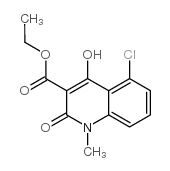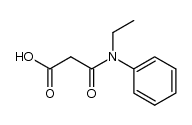248281-84-7
| Name | 5-chloro-N-ethyl-4-hydroxy-1-methyl-2-oxo-N-phenylquinoline-3-carboxamide |
|---|---|
| Synonyms |
5-Chloro-N-Et-4-hydroxy-1-methyl-2-oxo-N-Ph-1,2-dihydroquinoline-3-carboxamide
5-chloro-N-ethyl-1,2-dihydro-4-hydroxy-1-methyl-2-oxo-N-phenyl-3-quinolinecarboxamide 5-CHLORO-N-ETHYL-4-HYDROXY-1-METHYL-2-OXO-N-PHENYL-1,2-DIHYDROQUINOLINE-3-CARBOXAMIDE 5-chloro-n-ethyl-2-hydroxy-1-methyl-4-oxo-n-phenyl-1,4-dihydroquinoline-3-carboxamide 5-Chloro-4-hydroxy-1-methyl-2-oxo-1,2-dihydro-quinoline-3-carboxylic acid ethyl-phenyl-amide Lanquinimod Laquinimod 2-{[(2,4-Dichlorophenoxy)acetyl]amino}ethyl thiocyanate N-ethyl-N-phenyl-1,2-dihydro-4-hydroxy-5-chloro-1-methyl-2-oxoquinoline-3-carboxamide Thiocyanic acid, 2-[[2-(2,4-dichlorophenoxy)acetyl]amino]ethyl ester 5-chloro-1,2-dihydro-N-ethyl-4-hydroxy-1-methyl-2-oxo-N-phenyl-3-quinoline carboxamide 5-Chloro-4-hydroxy-1-methyl-2-oxo-N-ethyl-N-phenyl-1,2-dihydroquinoline-3-carboxamide N-ethyl-N-phenyl-5-chloro-1,2-dihydro-4-hydroxy-1-methyl-2-oxo-quinoline-3-carboxamide [14C]-Laquinimod ABR-215062 |
| Description | Laquinimod is a potent immunomodulator which prevents neurodegeneration and inflammation in the central nervous system. |
|---|---|
| Related Catalog | |
| Target |
NF-κB |
| In Vitro | Laquinimod reverses EAE and inhibits pathogenic T cell immune responses. Laquinimod reverses RR-EAE and inhibits inflammatory T cell responses via a direct effect on myeloid APC. Laquinimod alters myeloid APC subsets and inhibits Th1 and Th17 polarization of myelin-specific T cells. Laquinimod-induced type II (M2) monocytes reverse established EAE[1]. Laquinimod modulates the phenotype of B cells of healthy donors. Laquinimod modulates expression of markers related to regulatory capacity in B cells of RRMS patients. Laquinimod reduces IFNγ cytokine expression in CD4+ T cells[2]. |
| In Vivo | Laquinimod treatment inhibits donor myelin-specific T cells from transferring EAE to naive recipient mice. In vivo laquinimod treatment alters subpopulations of myeloid antigen presenting cells (APC) that include a decrease in CD11c+CD11b+CD4+ dendritic cells (DC) and an elevation of CD11bhiGr1hi monocytes[1]. |
| Cell Assay | Purified CD11b+ cells from laquinimod- or vehicle-treated mice are cultured with naive CD4+ cells isolated from laquinimod- or vehicle-treated 2D2 mice and antigen (MOG p35-55, 20 µg/mL). Cells are cultured in 96-well microtitre plates at a concentration of 0.25×106 cells/mL. Culture medium consisted of RPMI 1640 supplemented with L-glutamine (2 mM), sodium pyruvate (1 mM), penicillin (100 U/mL), streptomycin (0.1 mg/mL), 2-mercaptoethanol (5×10-5 M) and 10% (v/v) fetal bovine serum. Cells are incubated for 48 h and pulsed for 18 h with 1 µCi per well of [3H]-thymidine before harvesting. |
| Animal Admin | Seven to 10-week-old female C57BL/6, DBA/1 or SJL/J mice are injected subcutaneously with 50 µg MOG p35-55, 50 µg rMOG or 100 µg PLP p139-151, respectively, in complete Freund's adjuvant. After immunization and 2 days later, mice receive 200 ng (C57BL/6) or 100 ng (SJL/J) pertussis toxin intraperitoneally (i.p.). For adoptive transfer, donor SJL/J mice are immunized as described above and treated daily with laquinimod or vehicle. 10 days later, cells from draining lymph nodes and spleen are isolated, re-stimulated for 48 h (20 µg/mL PLP p139-151), and injected i.p. into naive SJL/J recipients (107 cells per mouse). Animals are observed daily and clinical scores are assessed as follows: 0, no signs; 1, decreased tail tone; 2, mild monoparesis or paraparesis; 3, severe paraparesis; 4, paraplegia and/or quadraparesis; and 5, moribund or death. |
| References |
| Density | 1.4±0.1 g/cm3 |
|---|---|
| Boiling Point | 546.0±50.0 °C at 760 mmHg |
| Molecular Formula | C19H17ClN2O3 |
| Molecular Weight | 356.80 |
| Flash Point | 284.0±30.1 °C |
| PSA | 87.42000 |
| LogP | 2.79 |
| Vapour Pressure | 0.0±1.5 mmHg at 25°C |
| Index of Refraction | 1.587 |
|
Material Safety Data Sheet
Section1. Identification of the substance Product Name: Laquinimod Synonyms: Section2. Hazards identification Harmful by inhalation, in contact with skin, and if swallowed. Section3. Composition/information on ingredients. Ingredient name:Laquinimod CAS number:248281-84-7 Section4. First aid measures Skin contact:Immediately wash skin with copious amounts of water for at least 15 minutes while removing contaminated clothing and shoes. If irritation persists, seek medical attention. Eye contact:Immediately wash skin with copious amounts of water for at least 15 minutes. Assure adequate flushing of the eyes by separating the eyelids with fingers. If irritation persists, seek medical attention. Inhalation:Remove to fresh air. In severe cases or if symptoms persist, seek medical attention. Ingestion:Wash out mouth with copious amounts of water for at least 15 minutes. Seek medical attention. Section5. Fire fighting measures In the event of a fire involving this material, alone or in combination with other materials, use dry powder or carbon dioxide extinguishers. Protective clothing and self-contained breathing apparatus should be worn. Section6. Accidental release measures Personal precautions: Wear suitable personal protective equipment which performs satisfactorily and meets local/state/national standards. Respiratory precaution:Wear approved mask/respirator Hand precaution:Wear suitable gloves/gauntlets Skin protection:Wear suitable protective clothing Eye protection:Wear suitable eye protection Methods for cleaning up: Mix with sand or similar inert absorbent material, sweep up and keep in a tightly closed container for disposal. See section 12. Environmental precautions: Do not allow material to enter drains or water courses. Section7. Handling and storage Handling:This product should be handled only by, or under the close supervision of, those properly qualified in the handling and use of potentially hazardous chemicals, who should take into account the fire, health and chemical hazard data given on this sheet. Store in closed vessels. Storage: Section8. Exposure Controls / Personal protection Engineering Controls: Use only in a chemical fume hood. Personal protective equipment: Wear laboratory clothing, chemical-resistant gloves and safety goggles. General hydiene measures: Wash thoroughly after handling. Wash contaminated clothing before reuse. Section9. Physical and chemical properties Appearance:Not specified Boiling point:No data No data Melting point: Flash point:No data Density:No data Molecular formula:C19H17ClN2O3 Molecular weight:356.8 Section10. Stability and reactivity Conditions to avoid: Heat, flames and sparks. Materials to avoid: Oxidizing agents. Possible hazardous combustion products: Carbon monoxide, nitrogen oxides, hydrogen chloride. Section11. Toxicological information No data. Section12. Ecological information No data. Section13. Disposal consideration Arrange disposal as special waste, by licensed disposal company, in consultation with local waste disposal authority, in accordance with national and regional regulations. Section14. Transportation information Non-harzardous for air and ground transportation. Section15. Regulatory information No chemicals in this material are subject to the reporting requirements of SARA Title III, Section 302, or have known CAS numbers that exceed the threshold reporting levels established by SARA Title III, Section 313. SECTION 16 - ADDITIONAL INFORMATION N/A |
| Hazard Codes | T+ |
|---|---|
| HS Code | 2933790090 |
| Precursor 9 | |
|---|---|
| DownStream 1 | |
| HS Code | 2933790090 |
|---|---|
| Summary | 2933790090. other lactams. VAT:17.0%. Tax rebate rate:9.0%. . MFN tariff:9.0%. General tariff:20.0% |

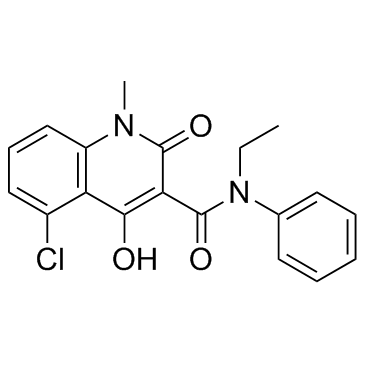
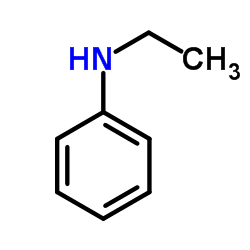


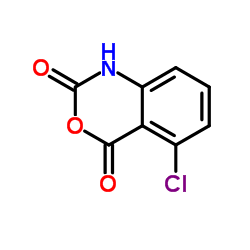

![5-Chloro-1-methyl-1H-benzo[d][1,3]oxazine-2,4-dione structure](https://image.chemsrc.com/caspic/424/40707-01-5.png)
